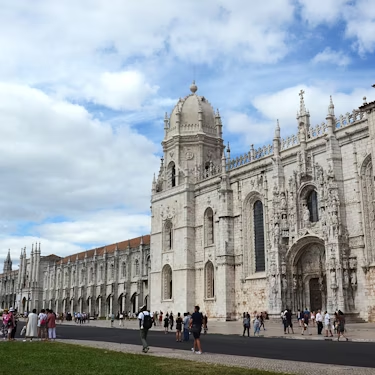More about: Lisbon in 3 Days: tips, what to see, and much more
If you are planning a three-day trip to Lisbon, you should know what is the best thing to see in Lisbon in that time. Fortunately, in 72 hours we will have time to know the essentials of the Portuguese capital and also make an excursion to one of the most important sites around the city. To enjoy your trip I leave you this three-day itinerary designed to make the most of the Portuguese city.
Day 1: Historical center of Lisbon: Alfama, Baixa, Chiado and Bairro Alto neighborhoods

We will dedicate the first day of our trip to Lisbon to get to know in depth the historic center of the city, formed by the neighborhoods of Alfama, Baixa, Chiado and Barrio Alto.
These neighborhoods are home to many of the main tourist attractions of the city and can be explored on foot in a single day. Below, I share with you what are the must-see places to see in each of them:
Morning in the Alfama neighborhood
The ideal place to start our visit to Lisbon is in the Alfama neighborhood. This neighborhood grows under the castle of St. George and in its steep streets you can breathe the authentic essence of Lisbon. Originally a fishermen's neighborhood, today it has become the most genuine area of the capital and the cradle of Fado, the most popular musical genre in Portugal.
This neighborhood has several must-see spots to visit:
- Its viewpoints, such as Portas do Sol or Santa Lucia, which offer us very beautiful and complete views of the city.
- The castle of San Jorge.
- The National Pantheon.
- The Cathedral of Lisbon.
Booking a guided tour of Alfama is the best way to soak up the culture of Lisbon and learn about its history, the best places and even the origin of Portuguese fado.
Walk through Baixa and Chiado
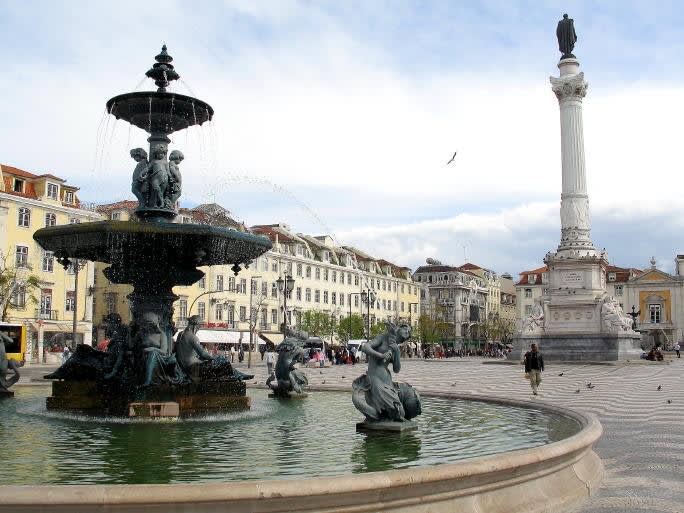
After spending the morning in the Alfama neighborhood it is time to visit the Baixa and Chiado neighborhoods. From Alfama you can walk down and start to see these neighborhoods by the Pedro IV square, next to which is the Baixa market, where we can take the opportunity to eat and then go down the Rua Augusta to the Comercio square. This shopping street connects the two most important squares of Lisbon.
The Commerce Square is one of the nerve centers of the city. It is accessed by crossing the Arco de Rua Augusta, which can be accessed to climb to its viewpoint. In the square we have the statue of José I and its pier from which we can enjoy the Tagus River.
An excellent option to get to know the Chiado neighborhood is to book a tour of Lisbon, which covers this area as well as the main monuments of the city. Oh, and it also includes wine tasting, tapas and cream cakes - delicious!
Finish the day on a high note
Already in the afternoon we can retrace our steps along Rua do Ouro street to the Santa Justa elevator. This is an elevator that reaches a walkway 45 meters high that connects the neighborhoods of Baixa and Chiado. You can climb to its terrace that serves as a viewpoint before leaving the top and visit the convent do Carmo.
The church of the convent was left in ruins after the earthquake of 1755 and can now be visited offering a very special postcard. Rarely can you contemplate a Gothic church whose ceiling is the sky itself. The convent also houses the archaeological museum of Do Carmo.
The streets adjacent to the convent already belong to Lisbon's Barrio Alto. It is an avant-garde neighborhood full of life and activity and is the ideal area to dine and finish the day enjoying the nightlife of the city.
Day 2: Excursion to the village of Sintra
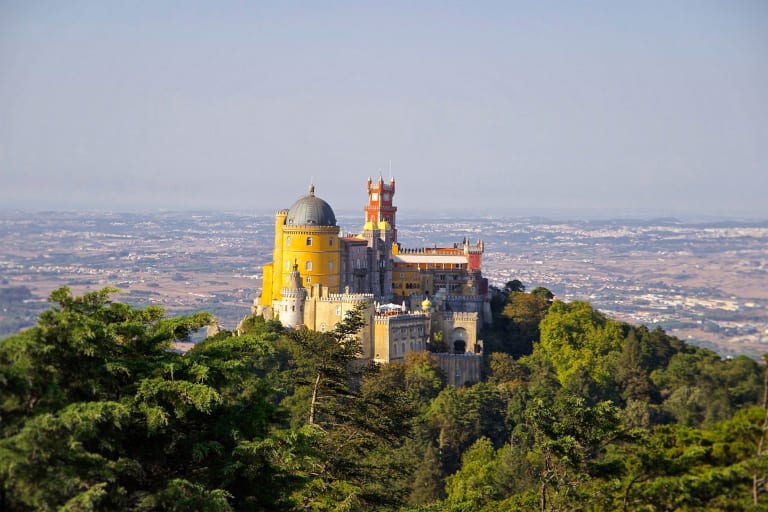
The second day of our stay in Lisbon can be used for a day trip outside the city. The destination is well worth devoting almost a whole day. It is the Villa of Sintra, a complex of palaces declared a World Heritage Site in 1995.
In this link you have all the information you need to know to get from Lisbon to Sintra, although in my opinion it is best to book an excursion to Sintra from Lisbon. In the village of Sintra there is a lot to see, so it will take us almost a whole day to get to know it. The main monuments you should visit are:
Pena Palace
The Pena Palace is the best known and most visited monument in Sintra thanks to its architectural variety and striking colors. The building is relatively modern, having been built in the 19th century, and is considered one of the most beautiful palaces in Europe. Eclecticism is one of the hallmarks of the Palacio da Pena for its mixture of styles such as Romanesque, Mudejar and even Gothic.
Although the exterior has a lot of charm and the royal gardens that surround it are worth seeing, the interior of the palace can be visited and is also spectacular, so I recommend you buy a ticket for the Palacio da Pena.
Quinta da Regaleira
The Quinta da Regaleira is another spectacular palace in the Sintra complex. Historically linked to Masonic rites, it is a place full of symbolism and mysteries, so it is highly recommended to visit it with a guide to discover all its secrets.
The initiatory well in its gardens is one of its most impressive points. It is an inverted tower, hence the nickname of well, with a spiral staircase that runs along its 9 floors.
The National Palace of Sintra
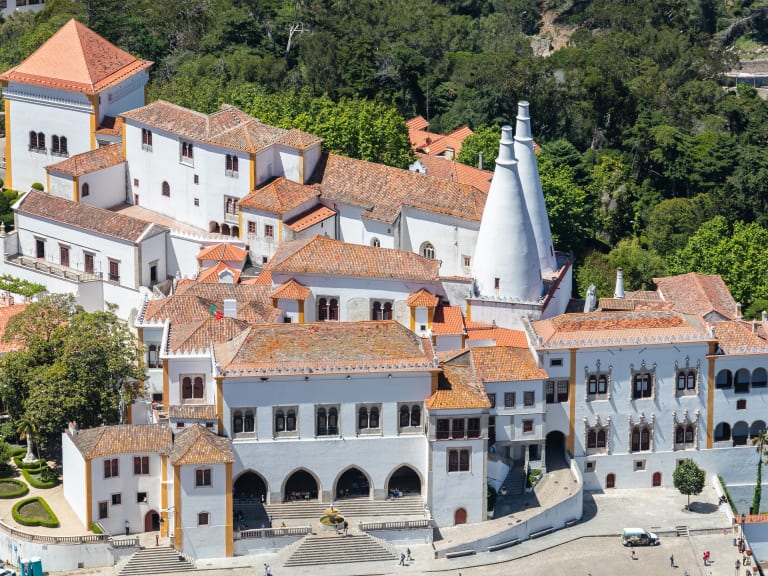
In the center of Sintra and visible from almost the entire village is the National Palace. It is a peculiar building of Arabic style crowned by two peculiar chimneys. In this case the main attraction is in the interior, since its rooms have mosaics formed by very well preserved tiles.
The Palace of Monserrate
The Monserrate Palace is less well known than the other palaces, but also because of this it has earned the reputation of being the hidden jewel of Sintra. The building has an architecture clearly influenced by the Arabian style and a spectacular garden with more than 3,000 species of exotic plants.
These are the essential monuments of Sintra but there are some more worth visiting if you have time, such as the Castelo dos Mouros, the Convento dos Capuchos or the Chalet and garden of the Countess.
Day 3: Belém neighborhood in depth

Technically, Belém is not a neighborhood of Lisbon. It was once a separate locality but the growth of the capital eventually absorbed this area which houses some of the best known monuments of the city and the whole country.
On the third and last day in Lisbon we will visit the Jerónimos Monastery and the Belém Tower, two of the most important symbols of Lisbon, as well as other monuments and experiences of this historic area.
To get there the best option is to take streetcar number 15 from the center. It takes about 20 minutes. From the Plaza del Comercio we have a stop and also near the same square are the docks from which we can take a boat to go sailing on the Tagus as an alternative.
Jerónimos Monastery
The first and fundamental point to visit in Belém is the impressive Jerónimos Monastery. And I say the first because it is the most visited monument in Lisbon and between the queues and everything there is to see in the complex it is easy to miss a large part of the day. However, all the time we spend there is justified.
The monastery was declared a World Heritage Site thanks to its architectural and artistic value. Its cloister and church were fruits of the golden age of discoveries in Portugal, which is reflected in the magnificence of the place.
Booking tickets to the Jerónimos Monastery in advance is almost mandatory, due to the amount of people who want to visit it. The entrance fee is 17 € and it is open every day of the week except Mondays.
Tasting the cakes of Belém
After the visit to the monastery it is time to taste one of the most recognized traditions of Belém: its cakes. These pastries of puff pastry and cream were made by the Hieronymite monks and can be tasted all over Lisbon. Although the place par excellence for this is the original factory, which is located right next to the Jerónimos Monastery.
After eating and regaining strength, it is almost obligatory to try these cakes with a coffee if we want to live the full Lisbon experience.
Monument to the Discoveries
This spectacular 50-meter high monument was built in 1960 to commemorate the 500th anniversary of the death of Henry the Navigator and as a tribute to all the adventurers and discoverers who marked the history of Portugal. It is located on the banks of the Tagus and we only have to cross the wide avenue in front of the monastery to get there.
Belém Tower
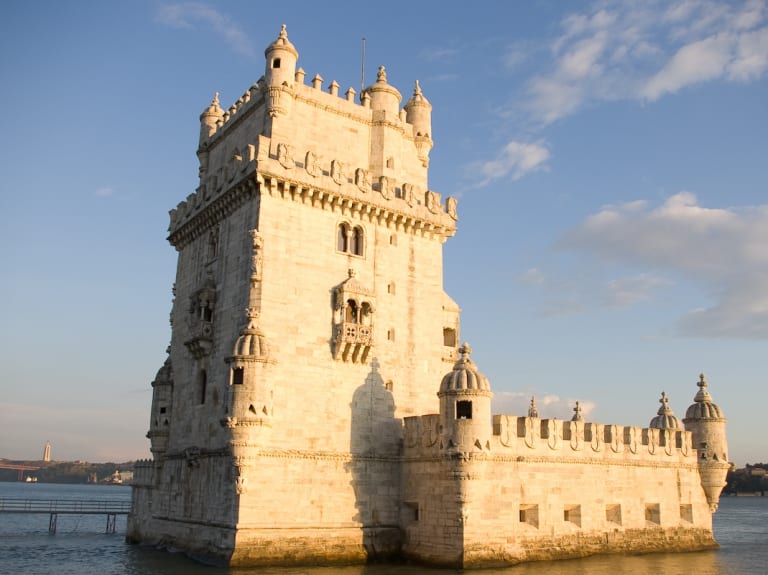
The Belem Tower is one of the symbols of Lisbon. From the monument of the discoveries we only have to follow the Avenida Brasilia westward away from the monastery to get there. It takes 5 minutes to reach its gardens and we will find the tower overlooking the river.
In fact, this small fort juts into the Tagus and, in addition to its defensive role, served as a prison and lighthouse. Its architecture is quite peculiar for this type of construction and you can access the interior to visit the dungeons and its roof overlooking the river.
From the edge of the tower there are spectacular views of the river and the 25 April bridge, the longest suspension bridge in Europe.
Museums of Belém
If after seeing these monuments we have time left over and we have been left wanting more, Belém offers us the possibility of visiting its many museums. The options we have are:
- The Museum of Carriages.
- The Museum of Contemporary Art of Berardo.
- The Electricity Museum.
- The Museum of Popular Art.
- The National Museum of Archeology of Lisbon.
The latter is my recommendation, as it is located in the east wing of the Jerónimos Monastery and houses the most important archaeological collection in Portugal, but, as you can see, the Belém neighborhood has options for all tastes.
The best way to conclude our trip to Lisbon is to attend a fado concert, for a 100% Portuguese experience.

